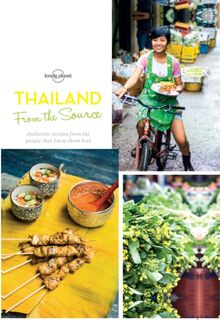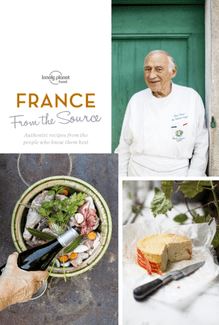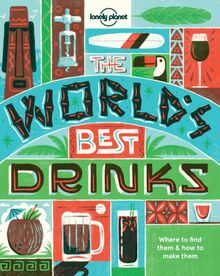-
 Univers
Univers
-
 Ebooks
Ebooks
-
 Livres audio
Livres audio
-
 Presse
Presse
-
 Podcasts
Podcasts
-
 BD
BD
-
 Documents
Documents
-
- Cours
- Révisions
- Ressources pédagogiques
- Sciences de l’éducation
- Manuels scolaires
- Langues
- Travaux de classe
- Annales de BEP
- Etudes supérieures
- Maternelle et primaire
- Fiches de lecture
- Orientation scolaire
- Méthodologie
- Corrigés de devoir
- Annales d’examens et concours
- Annales du bac
- Annales du brevet
- Rapports de stage
La lecture à portée de main
Vous pourrez modifier la taille du texte de cet ouvrage
Découvre YouScribe en t'inscrivant gratuitement
Je m'inscrisDécouvre YouScribe en t'inscrivant gratuitement
Je m'inscrisEn savoir plus
Vous pourrez modifier la taille du texte de cet ouvrage
En savoir plus

Description
Sujets
Informations
| Publié par | Lonely Planet |
| Date de parution | 01 août 2016 |
| Nombre de lectures | 0 |
| EAN13 | 9781760341756 |
| Langue | English |
| Poids de l'ouvrage | 27 Mo |
Informations légales : prix de location à la page 0,1000€. Cette information est donnée uniquement à titre indicatif conformément à la législation en vigueur.
Extrait
CONTENTS
Introduction
Northeast Spain
The Catalans, Valencians and Mallorquíns ploughed their own furrow long before Ferran Adrià changed the course of global cooking. This fiercely traditional cuisine features sticky stews and paellas, and meat and vegetables seared over flames scented with vine branches.
Central Spain
Rich game dishes, the country’s best cured ham, and slow, tender roasts in huge wood ovens dominate the cooking from the plains of central Spain. Landlocked Madrid is known as ‘Spain’s greatest port’ – the finest seafood arrives every day and takes pride of place in restaurants.
Northwest Spain
Galicia, with its variety of seafood, and Asturias, Spain’s dairy producers par excellence, flank the birthplace of Spanish haute cuisine – the Basque Country. Still a hotbed of culinary talent, its bright young stars work alongside the doyens of gastronomy to perfect the recipes of old and adapt them for the 21st century.
South Spain
In this region, dishes reflect not only the torrid climate, but its storied past. From bullfighting comes oxtail stew; from a historic coalition of sherry-makers and nuns come rich, eggy custards; from the Moorish invasion come battered lemon leaves and a smoky vegetable stew; and from Lenten rituals comes chickpeas with spinach.
Basic recipes
Recipe sources
Acknowledgements
INTRODUCTION
To a casual observer, there might seem something of a disconnect between the outward face of Spanish gastronomy – the futuristic revolution curated by Ferran Adrià and his ardent, blue-sky disciples – and the largely unchanged way in which the ordinary Spaniard shops, cooks and eats. The countless dishes that can be traced back to the pastoral tradition of carrying bread, oil, vinegar and garlic as sustenance on the long days and weeks of driving sheep to pastures new; the citrus fruits, saffron, cumin and almonds that came with the Moorish invasion; and the fascination with the tomatoes, peppers, corn and potatoes that arrived from the New World in the 16th-century Columbian Exchange. These were the great seismic shifts in Spanish home-cooking, not the advent of foams, freeze-drying, and cooking sous-vide.
Change is afoot, yes, but only insofar as it builds on the love and respect for what has gone before. Phrases such as ‘slow food’ and ‘food miles’ are all but redundant here, where the ready meal is an unknown concept and produce is only available for as long as it is in season. Almost every town has its weekly market, where herbs are sold in tied bouquets, where rice and flour come in hessian sacks, where your requested cut of meat is sliced from the animal in front of your eyes, where potatoes are muddy and apples misshapen. Where chickens have heads.
The rituals, too, continue to be sacred. Families come together on Sundays for animated afternoons centred around paella. An intrinsic part of any neighbourhood fiesta is the setting up of long trestle tables for communally cooked and eaten dinners that go on late into the night. The matanza , the annual slaughtering of pigs, followed by days of feasting, is still a reality in hundreds of Spanish villages and towns.
It is exactly these deeply entrenched traditions that provide the springboard for what is happening in restaurant kitchens around the country. Something I heard over and over while researching this book was ‘What we’re aiming to do is resurrect old recipes but bring them into the present day.’ Many of the recipes here reflect that philosophy, in which the spirits of long-passed grandmothers (and it is always grandmothers) provide the guiding hand at the stove, and inform the fundamental combinations and techniques at the heart of every innovation. You’ll find dishes that have passed down through generations of a chef’s family, but in his or her hands are given a twist: a fabada asturiana resembling a Tàpies art installation on the plate; hake given a hint of parsley when fake caviar containing its essence explodes on the tongue. We’re not pretending these recipes are simple, but with a little dedication – and perhaps a pipette – these are creations set to impress at a dinner party.
Of course you’ll also find good, honest peasant food, of a type that anyone could make with whatever happens to be in the larder – which is exactly the attitude with which it is approached in Spain.
NORTHEAST SPAIN
The Catalans, Valencians and Mallorquíns ploughed their own furrow long before the likes of Ferran Adrià changed the course of global cooking, and molecular gastronomy is an adjunct to fiercely traditional cuisine; sticky stews and paellas, meat and vegetables seared over flames scented with vine branches, and the unlikely pairing of mar i muntanya (meat with seafood).
BIKINI DE TARTUFO
Truffled cheese & ham toasted sandwich
ESCALIVADA
Chargrilled vegetable salad
COQUES
Mallorquín flatbreads
XATÓ CON PANECILLO DE ALFORFÓN
Salt cod salad with buckwheat bread
SUQUET
Fish & potato stew
SÍPIA AMB MANDONGUILLES
Squid with meatballs
POCHAS ESTOFADAS DE LAS POCHOLAS
Las Pocholas bean stew
FIDEUÀ
Seafood with noodles
POLLO AL CHILINDRÓN
Chicken with peppers & tomatoes
LUBINA A LA MALLORQUINA
Mallorcan-style sea bream
PAELLA VALENCIANA
Chicken & rabbit paella
TUMBET
Vegetable casserole
ÀNEC AMB PERES
Duck with pears
ARRÒS A BANDA
Fish-infused rice
COCHINILLO CON TUMBET
Roast suckling pig with tumbet
ENSAÏMADA
Mallorcan pastries
PANELLETS DE PINYONS
Marzipan balls with pine nuts
BIKINI DE TARTUFO
Truffled cheese & ham toasted sandwich
A playful take on a longstanding favourite bar snack, celebrity chef Carles Abellan’s ‘bikini’ is also a gourmet delight, given a delicious lift with a hint of truffle.
Chef // Carles Abellan Location // Tapas 24, Barcelona
L egend has it that the curiously named bikini de tartufo was first introduced in the 1950s by the owner of storied nightclub Sala Bikini (which itself took its Cold War–era name from US nuclear testing site, the Bikini Atoll), who brought the idea of the croque-monsieur from France. General Franco, who was in power in Spain at the time, had banned the use of foreign names, so it became known as ‘the house sandwich’. As its popularity grew throughout Barcelona and Catalunya (where it is still ubiquitous to this day), punters would ask for ‘one of those bikini sandwiches’. Eventually the name stuck.
In its most common form, it is nothing but a cheese and ham toasted sandwich, but Michelin-starred chef Carles Abellan has succeeded in taking it to a whole new level at his playful, neo-traditional tapas bar, Tapas 24.
‘Everyone thinks I invented this,’ he laughs, ‘but I stole the idea from Ferran Adrià when I worked at El Bulli. We served it at a banquet we were catering in the late ’80s, and it was a huge success. You now see it everywhere, but it’s important to get it right – you have to be generous with the ingredients. You can use regular white sliced bread, but we use tramezzino for the best texture. Mozzarella di bufala (buffalo mozzarella) is expensive, truffle is expensive, jamón ibérico is expensive. This is an expensive sandwich. But the mozzarella makes it light, sweet and creamy, in a counterpoint to the saltiness of the ham. The truffle takes it to another level.’
‘There are some dishes that are timeless,’ Carles says. ‘We had them as children, and the flavours stay engraved in your memory. They also taste as good now as they did fifty years ago. The bikini is one of these.’
BIKINI DE TARTUFO
Truffled cheese & ham toasted sandwich
Serves 4
Preparation & cooking time 15min
4 slices tramezzino (or 8 slices of white bread, without crusts)
200g (7oz) mozzarella di bufala
pinch of salt
truffle oil, to taste
80g (3oz) jamón ibérico, finely sliced
50g (1¾oz) melted butter 1 Cut the bread in half if using tramezzino. Thickly slice the mozzarella, patting dry with kitchen paper, and lay on half the bread. Lightly sprinkle with salt and drizzle with truffle oil. 2 Lay the jamón ibérico on top of the cheese, followed by the second slice of bread. 3 Brush both sides of the bread with melted butter and toast in a sandwich toaster until golden.
ESCALIVADA
Chargrilled vegetable salad
Smoky, chargrilled vegetables, torn into strips and served cool with olive oil, are the preferred Catalan accompaniment to roast meat, or simply served on tomato-rubbed bread and topped with anchovies.
Chef // Fidel Amigó Location // Cal Xim, Sant Pau d’Ordal
S ome have argued that the escalivada is merely a deconstructed ratatouille (many Catalan dishes do have a French overtone), but history tells us that red peppers, aubergines (eggplants) and tomatoes were used in Catalunya long before they crossed the border into France.
The onions most commonly used are cebollas tiernas (tender onions), known as ‘green onions’ elsewhere, though any reasonably sweet onion will serve. This dish is best made in summer, when the other vegetables are in season and at the high point of flavour, but can be made all year round.
‘Traditionally, the vegetables are cooked over the embers,’ says Fidel Amigó, who runs the family restaurant with his brother Santi. ‘In fact the word escalivada is Catalan for “roasted in embers”, but I prefer them cooked in the flames. It gives them a deeper, smokier quality, especially the aubergine. The kind of wood you use makes a difference, too. Here we’re in wine country, so we can use vine shoots, which add a lot to the flavour, but are quick to burn, so we also use oak.’
The brasa , the long wood-fired grill that sits at the entrance to the kitchen, is the heart and soul of Cal Xim. Everything is thrown on it, not just the lamb, chicken and rabbit that makes up the best part of demand, but fish and even foie gras is seared and made aromatic over this roaring blaze. It lends the restaurant a ho
-
 Univers
Univers
-
 Ebooks
Ebooks
-
 Livres audio
Livres audio
-
 Presse
Presse
-
 Podcasts
Podcasts
-
 BD
BD
-
 Documents
Documents
-
Jeunesse
-
Littérature
-
Ressources professionnelles
-
Santé et bien-être
-
Savoirs
-
Education
-
Loisirs et hobbies
-
Art, musique et cinéma
-
Actualité et débat de société
-
Jeunesse
-
Littérature
-
Ressources professionnelles
-
Santé et bien-être
-
Savoirs
-
Education
-
Loisirs et hobbies
-
Art, musique et cinéma
-
Actualité et débat de société
-
Actualités
-
Lifestyle
-
Presse jeunesse
-
Presse professionnelle
-
Pratique
-
Presse sportive
-
Presse internationale
-
Culture & Médias
-
Action et Aventures
-
Science-fiction et Fantasy
-
Société
-
Jeunesse
-
Littérature
-
Ressources professionnelles
-
Santé et bien-être
-
Savoirs
-
Education
-
Loisirs et hobbies
-
Art, musique et cinéma
-
Actualité et débat de société
- Cours
- Révisions
- Ressources pédagogiques
- Sciences de l’éducation
- Manuels scolaires
- Langues
- Travaux de classe
- Annales de BEP
- Etudes supérieures
- Maternelle et primaire
- Fiches de lecture
- Orientation scolaire
- Méthodologie
- Corrigés de devoir
- Annales d’examens et concours
- Annales du bac
- Annales du brevet
- Rapports de stage




















